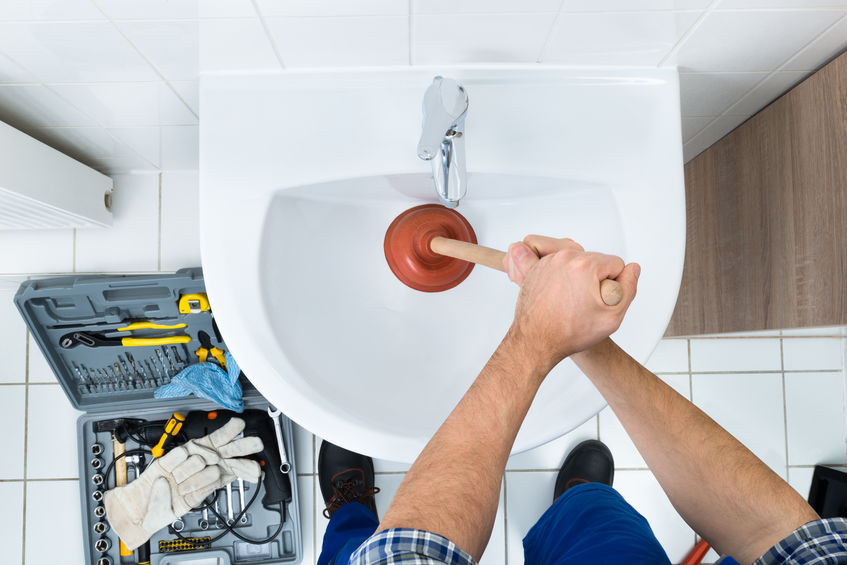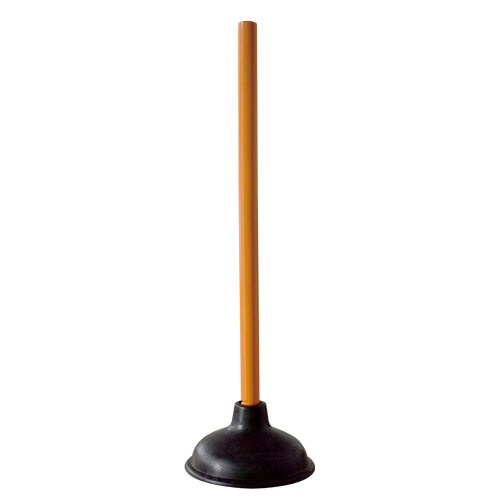Presented here down the page you can get lots of awesome points with regards to Here's How to Correctly Use a Toilet Plunger.

Introduction
Appropriate maintenance of household drains is vital for stopping obstructions and ensuring smooth water circulation. One of the key devices in every house owner's toolkit is the plunger, alongside different drain cleansers created to take on stubborn obstructions properly. This short article discovers how to make use of plungers and drain cleansers effectively to maintain your drains moving easily.
Section 1: Recognizing Plungers
Sorts of Plungers
There are several kinds of plungers offered, each designed for different sorts of drains and obstructs. One of the most common types include mug bettors, flange bettors, and accordion plungers.
How Plungers Job
Bettors work with the principle of developing pressure and suction to dislodge clogs. When appropriately used over a drainpipe, they create a vacuum that can pull out debris or break up blockages.
Choosing the Right Bettor
Picking the ideal plunger relies on the kind of drainpipe and the nature of the blockage. Cup bettors are optimal for sinks and tubs, while flange bettors are better fit for toilets because of their layout.
Typical Blunders with Plungers
Staying clear of these mistakes makes sure effective plunging: incorrect seal around the drainpipe, insufficient force, and unclear bordering debris.
Section 2: Utilizing Plungers Properly
Preparation
Before plunging, make sure the bettor covers the drainpipe entirely and forms a tight seal. Clear any visible debris around the drain opening.
Strategy
Beginning with mild diving activities to develop suction. Rise stress slowly, utilizing a constant rhythm. Repeat as required up until the drainpipe gets rid of.
Troubleshooting Tips
If plunging doesn't function, attempt changing the seal, using oil jelly for a much better seal, or using a different sort of bettor.
Section 3: Understanding Drain Cleansers
Sorts Of Drain Cleaning Company
Drain cleaners can be chemical or enzymatic. Chemical cleansers make use of strong chemicals to liquify blockages, while chemical cleaners utilize all-natural enzymes to break down raw material.
Just How Drain Cleaners Job
Chemical cleansers respond with obstructions to dissolve them, while enzymatic cleansers break down natural materials like hair and oil without hurting pipes.
Security Factors to consider
Always put on gloves and eye protection when using chemical drain cleaners. Make certain sufficient air flow and follow producer directions very carefully.
Eco-Friendly Alternatives
Consider utilizing vinegar and baking soda or enzyme-based cleansers for environmentally friendly options that are safer for pipelines and the environment.
Section 4: Making Use Of Drainpipe Cleaning Company Properly
Application Strategies
Pour chemical cleaners directly right into the drain opening. Allow them to help the advised time prior to flushing with hot water. Chemical cleaners need to sit over night.
Safety measures
Prevent blending various sorts of cleaners, as this can generate hazardous fumes. Never use chemical cleaners combined with a plunger, as spilling can take place.
Taking Care Of Persistent Blockages
For relentless clogs, take into consideration using a plumbing serpent or calling a specialist plumbing professional to avoid damages to pipelines.
Final thought
To conclude, understanding just how to make use of plungers and drainpipe cleansers successfully is essential for preserving healthy and balanced plumbing systems. By selecting the right tools and strategies, homeowners can take on minor blockages and avoid major plumbing issues down the line.
How To Properly Use A Plumbing Snake To Clear Drains
When any drain clogs in our home arise, we tend to gravitate toward the plunger and little else. In cases where the plunger and its vacuum-created pressure are not able to clear clogs, many immediately move to harmful chemicals or simply call their plumber to fix the issue.
we’re happy to help with all drain cleaning needs and concerns. This includes informing you on a few other home remedies you may have at your disposal for minor to moderate clogs, one of which is the use of a plumbing snake. Many people have never used one of these before – let’s go over the steps to take when your drain clogs and you have a plumbing snake available.
Attempt Plunger Use
The first step here, as we noted above, should indeed be to grab your plunger when you notice a drain clog and attempt to resolve it this way. If you’re unsure how to use a particular type of plunger, our plumbers can answer any questions you have. If this doesn’t do the trick, however, you move on to the snake.
Locate And Prepare Snake
A plumbing snake is a metal or plastic device that’s generally about a quarter of an inch thick. It’s design with significant extensions, meant to reach down into your clogged drain and push the clog out. Snakes also contain drain augers that will latch onto and push stubborn blockages.
If your plunger doesn’t clear a clog, locate your snake and bring it to the drain in question. We also recommend keeping a bucket nearby to collect the clog once you pull it out, plus we’d advise wearing goggles and possibly protective gloves.
Feed Snake
Once you’re ready to go, feed the snake slowly down the drain, using the crank device it comes with to keep it moving until it finds the clog. Once this happens, much of the clog will be latched onto the coil so you can pull it out, while the rest will simply break up and flow downward.
Detach Debris
Remove the snake slowly from the drain, and once you’ve done so, pick off any debris that’s stuck to the coil. This is another area where wearing gloves is a must.
Flush Drain
Finally, take a few minutes to ensure the snake has done its job correctly. If you’ve been using it on a toilet, flush the toilet a couple times and make sure everything flows well. If you’ve used it on a different drain, flush it with some room temperature water.
https://www.mybuddytheplumber.com/blog/how-to-properly-use-a-plumbing-snake-to-clear-drains/

Application Strategies
Pour chemical cleaners directly right into the drain opening. Allow them to help the advised time prior to flushing with hot water. Chemical cleaners need to sit over night.
Safety measures
Prevent blending various sorts of cleaners, as this can generate hazardous fumes. Never use chemical cleaners combined with a plunger, as spilling can take place.
Taking Care Of Persistent Blockages
For relentless clogs, take into consideration using a plumbing serpent or calling a specialist plumbing professional to avoid damages to pipelines.
Final thought
To conclude, understanding just how to make use of plungers and drainpipe cleansers successfully is essential for preserving healthy and balanced plumbing systems. By selecting the right tools and strategies, homeowners can take on minor blockages and avoid major plumbing issues down the line.
How To Properly Use A Plumbing Snake To Clear Drains
When any drain clogs in our home arise, we tend to gravitate toward the plunger and little else. In cases where the plunger and its vacuum-created pressure are not able to clear clogs, many immediately move to harmful chemicals or simply call their plumber to fix the issue.
we’re happy to help with all drain cleaning needs and concerns. This includes informing you on a few other home remedies you may have at your disposal for minor to moderate clogs, one of which is the use of a plumbing snake. Many people have never used one of these before – let’s go over the steps to take when your drain clogs and you have a plumbing snake available.
Attempt Plunger Use
The first step here, as we noted above, should indeed be to grab your plunger when you notice a drain clog and attempt to resolve it this way. If you’re unsure how to use a particular type of plunger, our plumbers can answer any questions you have. If this doesn’t do the trick, however, you move on to the snake.
Locate And Prepare Snake
A plumbing snake is a metal or plastic device that’s generally about a quarter of an inch thick. It’s design with significant extensions, meant to reach down into your clogged drain and push the clog out. Snakes also contain drain augers that will latch onto and push stubborn blockages.
If your plunger doesn’t clear a clog, locate your snake and bring it to the drain in question. We also recommend keeping a bucket nearby to collect the clog once you pull it out, plus we’d advise wearing goggles and possibly protective gloves.
Feed Snake
Once you’re ready to go, feed the snake slowly down the drain, using the crank device it comes with to keep it moving until it finds the clog. Once this happens, much of the clog will be latched onto the coil so you can pull it out, while the rest will simply break up and flow downward.
Detach Debris
Remove the snake slowly from the drain, and once you’ve done so, pick off any debris that’s stuck to the coil. This is another area where wearing gloves is a must.
Flush Drain
Finally, take a few minutes to ensure the snake has done its job correctly. If you’ve been using it on a toilet, flush the toilet a couple times and make sure everything flows well. If you’ve used it on a different drain, flush it with some room temperature water.
https://www.mybuddytheplumber.com/blog/how-to-properly-use-a-plumbing-snake-to-clear-drains/

I was guided to that write-up about How to Use a Plunger to Unclog a Toilet or Drain through a good friend on our other web address. I beg you take a moment to share this article if you enjoyed reading it. Thank you for your time invested reading it.
Services